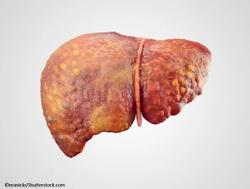© 2025 MJH Life Sciences™ , Patient Care Online – Primary Care News and Clinical Resources. All rights reserved.
Pleuritic Chest Pain in a 23-year-old Woman
The patient reports the chest pain began 6 days ago during a vacation abroad. She denies any injury. What does the chest x-ray reveal?
[[{"type":"media","view_mode":"media_crop","fid":"40383","attributes":{"alt":"Pneumothorax, spontaneous","class":"media-image media-image-right","id":"media_crop_9830642595499","media_crop_h":"0","media_crop_image_style":"-1","media_crop_instance":"4128","media_crop_rotate":"0","media_crop_scale_h":"0","media_crop_scale_w":"0","media_crop_w":"0","media_crop_x":"0","media_crop_y":"0","style":"float: right; height: 312px; width: 354px;","title":" ","typeof":"foaf:Image"}}]]A 23-year-old woman presents to her primary care provider with 6 days of right sided pleuritic chest pain that started during a recent vacation abroad. She denies any injury and is not short of breath at rest, but is short of breath when she walks. Since it wasn’t “that bad” she decided to finish her vacation and wait to see a doctor on returning home. Her past medical history is notable only for GERD. Her medications include omeprazole and birth control pills.
Her vital signs and pulse oximetry are normal except for a pulse of 108 and she appears to be in no acute distress. Head and neck exam are normal with no tenderness or JVD. Heart sounds are normal but breath sounds are decreased on the right. The abdomen is benign and the extremities are atraumatic without edema or cords. Her chest x-ray is shown above.
-- What finding is demonstrated? -- What other imaging tests would you order?
-- How should the patient be treated?
Please click here for answer and discussion.
Answer: Pneumothorax at risk for re-expansion pulmonary edema
Hopefully pulmonary embolism was at least a consideration as the patient recently traveled by air and the right lung shows oligemia. The oligemia in this case, however, is the result of a large right-sided pneumothorax. No other imaging is needed until after treatment.
Since the pneumothorax has been present for more than 2 days the lung should not be re-expanded too rapidly to minimize the chance of re-expansion pulmonary edema. The patient was sent to the local emergency department where a pigtail catheter was placed to slowly re-expand the lung.
Discussion
Pneumothorax (PTX) can be classified into a variety of categories depending upon size, hemodynamic effects, and whether or not it is the result of trauma or secondary to preexisting lung disease. In this case we have a large spontaneous PTX presenting in a delayed fashion. For this case we will discuss only non-traumatic or spontaneous PTX.
Symptoms of PTX usually include pleuritic chest pain that can progress to dyspnea on exertion, then dyspnea at rest, and finally hypotension if a tension PTX develops. Physical examination often reveals decreased breath sounds on the affected side and tympany to percussion. Findings may be absent or more subtle in a small PTX. A tension PTX is a clinical diagnosis with the additional findings of tracheal deviation, JVD, and hypotension
Chest x-ray is the test of choice for PTX. When compared to CT it may miss approximately 20% of PTXs, but the misses are of very small PTXs that don’t require intervention unless the patient is on positive pressure ventilation. It should be noted that a supine chest x-ray, as in a trauma patient, is less sensitive
Treatment of spontaneous PTX depends on size, duration of symptoms, underlying lung disease, and whether or not it is recurrent. For primary PTX, where there is no known underlying lung disease, a small PTX rarely requires intervention and can be observed with close follow-up if it has not increased in size after 6 hours. It should resolve at about 1% lung volume per day. A large spontaneous PTX usually requires aspiration via a pigtail catheter and a delayed chest x-ray to check for recurrence, which would signify and air leak and the need for admission. See Table below for details on PTX sizes and treatment decisions.
PTX secondary to underlying lung disease usually should be treated with a chest tube and admission, regardless of size, as an ongoing air leak will usually be present. Common lung diseases that can predispose to secondary PTX include COPD, cystic fibrosis, lung cancer, and infection. More details in the Table, below.
If a PTX does not resolve or recurs, surgical options include pleurodesis, stapling. It is very important to avoid rapid lung re-expansion if the PTX has been present for more than 2 days as rapid re-expansion can rarely cause flash pulmonary edema that can be fatal
Table.
{C}
| Symptoms: | Pleuritic chest pain > DOE > SOB at rest > hypoxia >hypotension |
| Imaging: | Sensitivities: X-ray: 80% (supine worse), CT:100% |
| Sizes: | Small (<15%): <2cm lateral & <3cm at apex. Large (>15%): >2cm lateral & >3cm apex |
| Duration: | >2 days old: Re-expand slowly w/o suction to prevent re-expansion pulmonary edema. Admit ICU |
| Primary: | No known lung disease and age <50y. Usually a 20-40y/o svelte smoker. |
| Rx Small: | <3 cm from inner rib to apex: O |
Aspirate →shut valve →4h CXR: if normal remove catheter & CXR in 2h
If recurrent PTX → pigtail catheter with Heimlich valve
If >2.5L aspirated, air leak likely so chest tube will be needed
| Recurrent: | If second episode, refer to surgeon for possible pleurodesis or stapling |
| Secondary: | COPD, cystic fibrosis, PCP, TB, cancer If age >50 likely secondary even if no know lung disease |
Chest tube (because usually have air leak) & admit.
Refractory: stapling or pleurodesis



